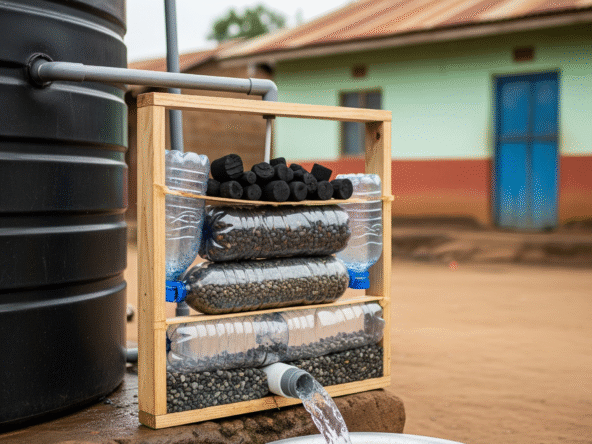Water conservation is increasingly critical in Kenya’s homes, farms, and rental properties. As interest in sustainable food production grows, aquaponics which combines fish farming with soil-less plant growing offers a smart, water-efficient solution. One underused source of water? Your tank overflow.
This article explains how to repurpose overflow water from rainwater or household tanks into aquaponic systems, boosting sustainability while cutting utility costs.
Why Aquaponics + Overflow Makes Sense
Aquaponics systems are ideal for:
- Households already using rainwater harvesting
- Compounds with frequent tank overflow
- Backyard farmers or landlords adding value to rental space
Overflow from poly or 5000-litre Kentanks is typically clean enough for reuse—especially if pre-filtered. It’s a great fit for aquaponic loops that require consistent water levels.
How It Works
A simplified system setup might look like this:
Main Tank → First-Flush Diverter → Overflow Pipe → Filter Box → Aquaponics Tank
Use a first-flush diverter to remove roof or dust contaminants, then pipe overflow into a settling chamber before it reaches your fish tank or grow bed.
Benefits of Overflow Reuse in Aquaponics
| Advantage | Description |
|---|---|
| Water savings | Reduce dependence on fresh municipal or borehole supply |
| Natural fertilization | Fish produce nutrients for the plants—no need for extra inputs |
| Backup supply | Overflow acts as a top-up source during evaporation or leaks |
| Compact farming | Ideal for peri-urban rental plots with limited space |
| Closed-loop system | Supports greywater or reuse initiatives |
If you’re already using centralized tanks, this integration makes even more sense.
Components You’ll Need
- Settling tank or filter box for debris screening
- IBC tanks or food-safe poly tanks for fish
- Grow beds (gravel, clay pebbles, or coconut husk)
- Solar or gravity-fed pump systems
- Float switches to regulate tank refill (automation guide here)
Gravity setups work well where the main tank is elevated. For these, refer to gravity-fed system layouts.
Best Practices for Overflow Integration
- Install diverters and filters before the aquaponic reservoir
- Match tank overflow rate with grow bed inflow rate
- Place your aquaponics loop downhill from the main tank to use gravity
- Add a bypass in case of excess overflow beyond what the system can absorb
These steps also prevent root rot or nutrient overload during Kenya’s long rains.
Common Mistakes to Avoid
- Routing dirty, debris-filled overflow into fish tanks
- Ignoring tank orientation (aquaponics should be lower)
- Overloading small grow beds with high tank overflow volume
- Letting overflow water stagnate before entering the system
Incorporating tank overflow into aquaponics systems is a clever way to save water, grow food, and reduce environmental impact especially in urban and peri-urban Kenya. Whether your overflow comes from a rain barrel or a centralized tank setup, this method turns waste into value.
Further Reading on Water Reuse:



